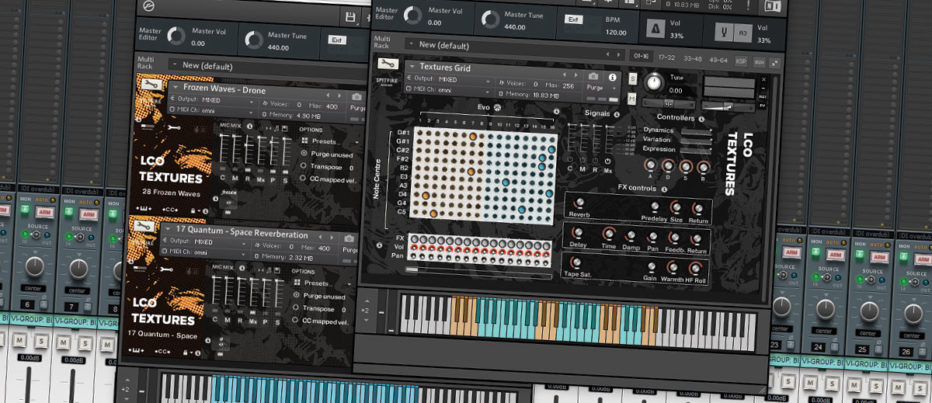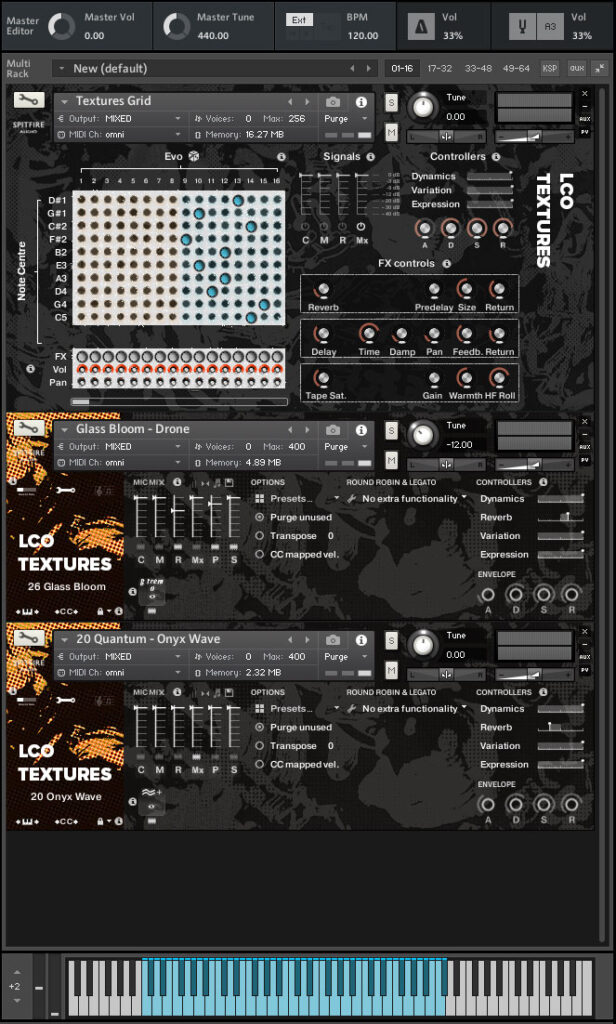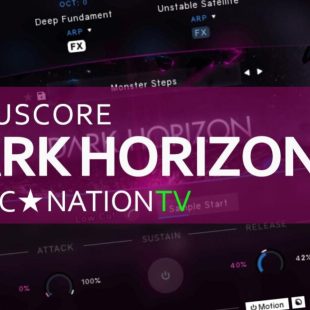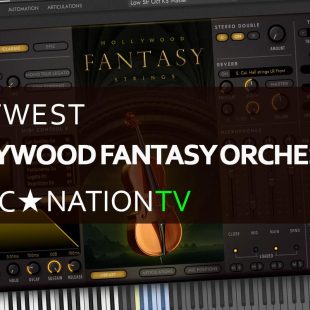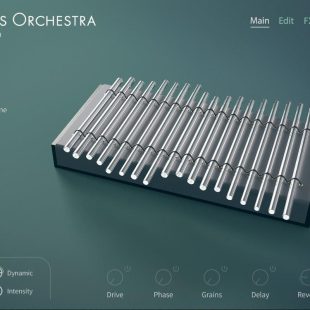SPITFIRE AUDIO LONDON CONTEMPORARY ORCHESTRA TEXTURES – FLIGHT OF FANTASY
Hello, and welcome to another StudioWise review. Spitfire Audio are releasing titles at a head-spinning rate recently, and with such high production value, it is becoming increasingly difficult to decide where exactly to invest your money. With plenty of large orchestral offerings already, LCO Textures is much a more specialised and boutique affair that should appeal to those seeking something a little unconventional.
It’s always a joy to review Spitfire Audio libraries, especially special interest experiments like this. For what on the outside looks to be a fairly plain orchestral library recorded in a fascinating environment, I think there is more depth to be found here due to the rather eclectic selection of instruments on offer.
Let’s get this installed and see what’s on offer.
Overview
London Contemporary Orchestra Textures is a sample library designed for use in Native Instruments Kontakt version 5.5 and higher. It features around 13GB of sampled orchestral elements recorded in an atmospheric cold-war-style aircraft hanger in Bentwaters, Woodbridge.
LCO Textures is an EVO Grid library, one of Spitfire Audio’s mainstay and innovative engines designed to playback animated, movement and constantly evolving soundscapes. The grid interfaces feature X and Y axis lines for placing pins, or posts, into points representing pre-recorded samples. The grid is sectioned off into colour-coded zones, each becoming increasingly more intensive the deeper into the zone a pin is placed.
The concept is to arrange samples, or EVOs, which each playback at different rates against each other, giving the impression of a constantly churning and moving texture.
To further increase the illusion the software encourages randomising EVO pins using a die roll system that can be set conservatively, restricted to single zones; or wildly experimentally using all zones.
Through this randomisation process, it is possible to land somewhat close to something interesting for your project. Then by fine-tuning the pin locations, altering levels and effects, or even bringing in extra individual EVO instances, you are never left lost without options.
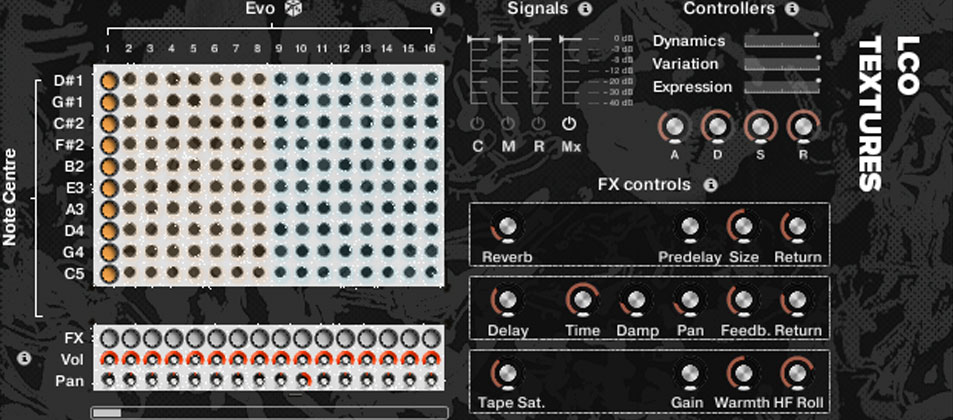
In Use
Firstly, a word about the GUI design, which I am not a fan. The low-tech graphics are a real step back from the previous titles, especially the gorgeous Hans Zimmer Strings and Eric Whitacre Choir interfaces. Looking more like an art student project, the tiny buttons are misaligned with glitches affecting most of the EVO pins. In addition, it is all but impossible to see pan positions which make navigation a nightmare. The whole GUI reeks of poor Windows 95 design and is just a mess.
Moving on, there is wonderful wide-eyed excitement from the Spitfire team on YouTube for this recording made outside of the Air Lyndhurst studio home base. Perhaps a homage in part to the company’s name, it’s great the company is branching out and experimenting with environments. Though recording in aircraft hangers is nothing pioneering, it is certainly good to see the team’s enthusiasm and passion for the title.
Experimenting with inventive environmental spaces like this was put to good use some years ago with The Grange, a drum sample library recorded at a now private residence Headley Grange in England, the very same location Led Zeppelin, among other mega bands, recorded multiple historic rock album during the 1970s.
Though technically applying a convolution reverb would replicate much of the ambience of the location, there is a lot to be said for the way the aircraft hangar interacts not only with the instrument overtone but also with the player’s reaction to the space, especially the vocalists.
For better or worse the massive 10sec+ reverb tail naturally occurring inside this cavern tends to pigeonhole LCO Textures and rather limits the flexibility of the library to basic soundscapes and sound design textures. Any melodic, solo or percussion lines will require another library to be layered.

The marketing hype behind LCO Textures is the aircraft hangar location. However, I was more impressed by the interesting selection of instruments, and in particular, the vocal choir. Though there is a lot of content here to explore, I would have liked to have seen a few even more esoteric instruments recorded while they were there – perhaps some Celtic-inspired instruments, percussion or even vintage synthesisers to explore the space.
In a somewhat disjointed, beautiful way, the choir sounds at odds with the rest of the orchestra. Mostly I believe this is because the very nature of EVO Grid is to introduce randomness, dissonance and unusual pitching, all of which are against the grain to a human vocalist, I’m sure.
This clash of tunings with the voice does tend to make the patches more uneasy and tense, verging on thriller and horror genre when you push deeper into grid zones.
EVO Zones
Each of the aptly named zones (ethereal, mercurial, quantum, and astral) provides its own unique characteristic and using the randomisation die arbitrarily throws pins around within the defined zones.
For my taste, unless you get really lucky, randomising across the entire grid is a little too haphazard. I much prefer to start with a random roll on a single zone than to manually introduce elements for others where I felt the patch was lacking punch.
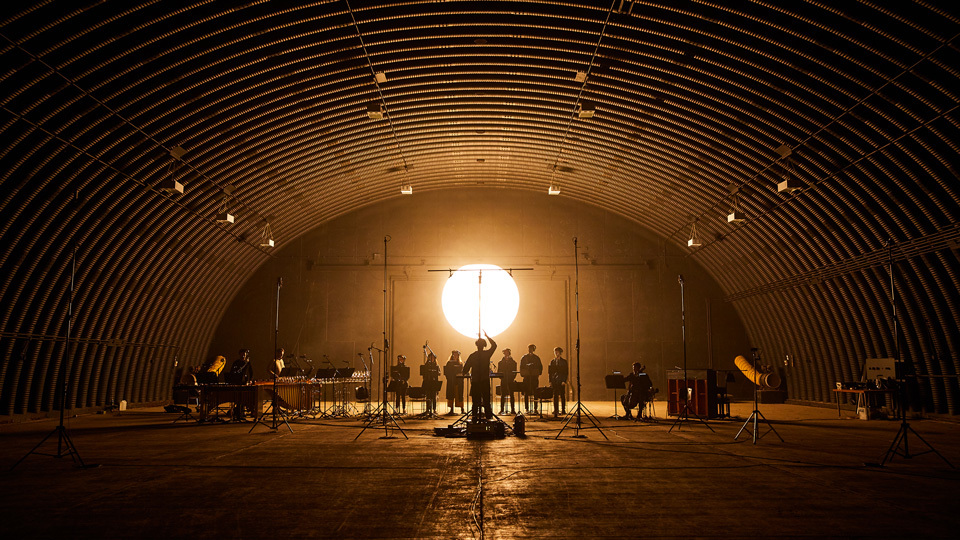
Included in the library are all the individual EVOs as separate instances. So layering more instances adds intensity and depth if that is what you need. Of course, it’s possible to completely ignore the core Grid and create your own multi using individual elements, something I didn’t explore very much though I could see a lot more control coming from using this method.
There is excellent tonal control over the performers with the included mic selection. I found the majority of the time the well-produced “Mx” setting is perfect. If you want a little more bite, bringing in the close mics adds details, inversely the room mics add more width and blur to the sound.
The included FX feels a little over the top for such a lush and characteristic library as this. The reverb washes the already reverb-saturated samples, positively drowning the instruments in the stuff. Though I do quite like this for effect, for me, it is pure sound design and nothing you would consider for orchestration arrangements.
The delay adds some dimension to the sound, but most of the fine-tuning controls are lost for me due to the very slow-evolving nature of the EVOs.
The tape saturation, again, did not do much for me. I see it as just a way to increase the overall gain and possibly bring a subtle warmth to the signal.
LCO Textures includes in addition to the individual EVO recordings an excellent selection of curated presets. Most, if not all, are extremely well designed and in the most part where I tend to go immediately for a starting point.
Conclusion
The marketing around LCO Textures focuses on the on-location recording environment. But for me, the hero is the combination of voice and traditional instruments. The union is not by any means harmonious, but the appeal lies in the discord.
This EVO title sits well with the others in the genre, such as Waves, Swarm and the recent British Drama Toolkit system. Together these platforms create bubbling masses of movement making other sample libraries sound positively asleep. There is scope to overlay more upfront instruments from other libraries for melody or solos without fear of over-saturating the arrangement.
LCO is close to stepping over the line in regard to total composition automation. The randomly generated presets are all very lush and full of character – more than what is deserved from a single finger held on your keyboard. The benefits, however, are fantastic. Hold down a triad chord for a few minutes and you be rewarded with an instant cinematic backing track that previously would have taken days of skilful arranging and score writing to achieve.
Perhaps Spitfire Audio is shooting itself in the foot by inadvertently dumbing down the industry, but, for now, these kinds of libraries offer instant gratification and most importantly fast, high-quality orchestral arrangements for very little effort.
Though I question Spitfire’s art direction with the UI, LCO Textures sounds incredible. Spitfire’s excellent EVO Grid engine is put to good use here and new adapters will no doubt become devotees to the system.
I particularly love the use of human voice in this and other recent titles and hope Spitfire continue to push further into this genre. LCO Textures is more biting than a typical soundscape-type library and certainly, more than I was expecting. There are soft swells and crescendos, but also many interesting edgy little moments where one instrument or another pokes its head out, duly to be swamped in the heavy, omnipresent reverb.
Excellent, as expected and a definite highlight of the current catalogue. Composers looking for something a little left-field will find LCO Textures quirky and atmospheric sound a tempting consideration.

For full details and purchasing options, check the Spitfire Audio website www.spitfireaudio.com
Like the review? Shout us a cup of coffee!

